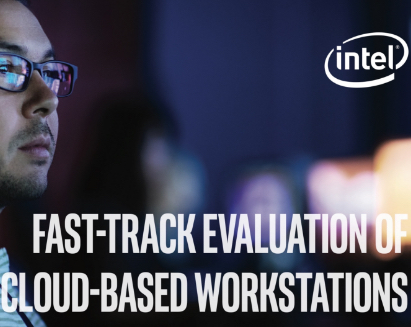What is VDI (Virtual Desktop Infrastructure,) why implement a VDI solution now and how do you decide on the best VDI solution for your business?
The VDI market is set for an explosion over the next five years, the Global VDI Market is expected to reach USD 25,496.3 Million by 2025 at a CAGR (compound annual growth rate) of 16.1%
In this blog, I will help you understand what Virtual Desktop Infrastructure is, why you should be looking at VDI for your business and what are the most important factors when deciding on the best VDI solution. Including, financial implications and in our opinion, most importantly, performance and therefore user experience to ensure a successful solution.
What is VDI?
VDI technology enables you to deliver desktops via virtual machines (VMs,) these desktops are managed from a central server and deployed to user via a client or browser. Originally called end-user computing (EUC), this desktop virtualization method was made popular by VMware, which standardized the term VDI. Operating Systems, Applications and Data are no longer being stored locally on an end-point device they are being hosted in data centers. These can be a business’s own, a co-location where a business has its own infrastructure or hardware sitting in a third-party data center, a hosted, private cloud environment where the business doesn’t own the infrastructure, it is rented or one of the Public or Hyperscale Clouds where a business pays for instances. The Operating system, Applications and data are then delivered to the user via an agent or browser.
The great thing about VDI is that users have access, to a personalized desktop, with their own icons, windows and applications and they can access the desktop from home or anywhere remotely on any end point device as all of the processing is being done centrally on a server in the datacenter.
What are the Key Benefits of VDI?
Increased Productivity – Research indicates that virtual desktop solutions can boost productivity by up to 20%. That is attributable to improved uptime levels, better performance and more opportunities for collaboration but also the ability to work from anywhere.
Reduction in IT Management Cost – All data and applications are kept centrally on the servers, all patches, upgrades and fixes are managed centrally as a single instance. The management of users, their access to applications and data is also centrally controlled by IT.
Improved Data Security & IP Protection – Centralised data ensures that no sensitive data ever leaves the security of the infrastructure. This removes the security risk and IP protection issues traditionally associated with having distributed data.
Increased Mobility for Users – Organisations can easily facilitate mobile workstyles for all remote users, improving productivity while retaining the necessary levels of security. The anywhere, anytime, anyhow nature of a virtual desktop, allows users to access their desktops on any end-point device, from anywhere.
Improved Enterprise Mobility – Businesses can rapidly respond to change, with the ability to provision and deploy new users, groups or project teams almost instantly, removing the lengthy process of workstation re-provisioning and redeployment.
Business Continuity – The availability of a virtual desktop, coupled with the centralised backup of data makes a VDI solution an attractive alternative to a more traditional disaster recovery option of a stand-by secondary site. It also addresses the increasing issue of weather, travel and pandemic related interruptions, with workers able to work as normal from a remote or home location.
Reduced Carbon Footprint – A reduced requirement for new equipment, lower energy requirements, extended PC life and more flexible working can all help shrink a company’s carbon footprint and address environmental targets.
Why VDI now?
Don’t call it a comeback, VDI isn’t a new phenomenon, it’s been here for years! This is a good thing as the technology is mature and there has been a lot of investment from the big players in the virtulisation space, such as Citrix and VMWare. Historically, there may have been cultural issues, switching from physical desktops to virtual desktops has proved problematic, users are often stuck in their ways, scared of change and may need convincing regarding performance, especially those using resource hungry graphical applications.
The VDI market is set for explosion over the next five years, with the latest estimates expecting the global virtual desktop infrastructure (VDI) market to be worth USD 25,496.3 million by 2025!
What is the best way of deploying VDI for your business?
There are three, key deployment methods to consider when looking at VDI as a solution for your business, in no particular order, they are as follows. We deploy and support all three VDI solution methods, we are only interested in the best solution for each use case.
On-Prem or On-Premise VDI – deployed on your infrastructure in your own data center, this could be one server in your office or could be your own private data centre, where you are responsible for the infrastructure and everything associated with it. For this sort of deployment, there is a large CapEx (Capital Expenditure) required as the infrastructure needs to be purchased, racked and set up before you can start provisioning desktops. A real positive of this sort of solution is that you are provisioning the servers to suit your use case, the applications your business uses and the workloads.
Private Cloud or Hosted VDI – Outsource your virtual desktops to a hosted environment, the Virtual Desktops are deployed and hosted in the hosting company’s data center, on bare metal servers, they are responsible for the infrastructure, this is often referred to as private cloud or hosted VDI. With this sort of delivery, there is normally an upfront fee to set up and then a monthly cost, keeping CapEx to a minimum and enabling a more manageable OpEx (Operational Expenditure) model. Like the on-premise solution, with this sort of solution you get the same benefits of provisioning infrastructure to suit your use case, applications and workflows with the extra plus of not having to buy or manage the hardware.
Hyperscale or Public Cloud – You pay for instances and use a vendor’s VDI broker. While spinning up a new desktop is easy, a VDI solution on the public cloud still requires extra, underlying infrastructure and integration components to work. This can be complicated, the infrastructure needs to be designed and deployed before you can begin deploying desktops, this requires a diverse and technical skillset. From the architecture and networking to the security, you are responsible for everything you build in the public cloud. Beware spiraling costs, each of the products or components you add to your virtual infrastructure, from domain controllers to VMs, come with their own associated costs, these are additional costs on top of the cost of each desktop. It’s important you understand what the monthly infrastructure costs look like and not just the desktop costs, it can be a rude awakening down the line. In short, beware, the actual cost of the solution, will be higher than the advertised desktop cost! The other thing to bear in mind is that with these instances, you get what you are given regarding resource, so with certain more demanding use cases and workflows performance can be an issue.
Food for thought:
In conclusion, the great thing about VDI is that there is a solution out there for every use case, although, certain use cases are more complicated to deploy successfully than others so deployment methods where you can tailor the infrastructure to suit your businesses unique use case will provide better performance due to the bespoke nature of the solution. If up-front costs and the associated costs of owning infrastructure are not an issue an on-premise solution gives you that bespoke solution. As does a private cloud VDI solution where again you get the benefit of a tailor-made solution, but the cost is spread over the length of the contract and the infrastructure is managed by the hosting company, you could say the best of both worlds.
If you need help identifying the right solution for your business, get in touch with us today, for a free, no obligation consultation and to arrange a free demo to trial a VDI solution.




